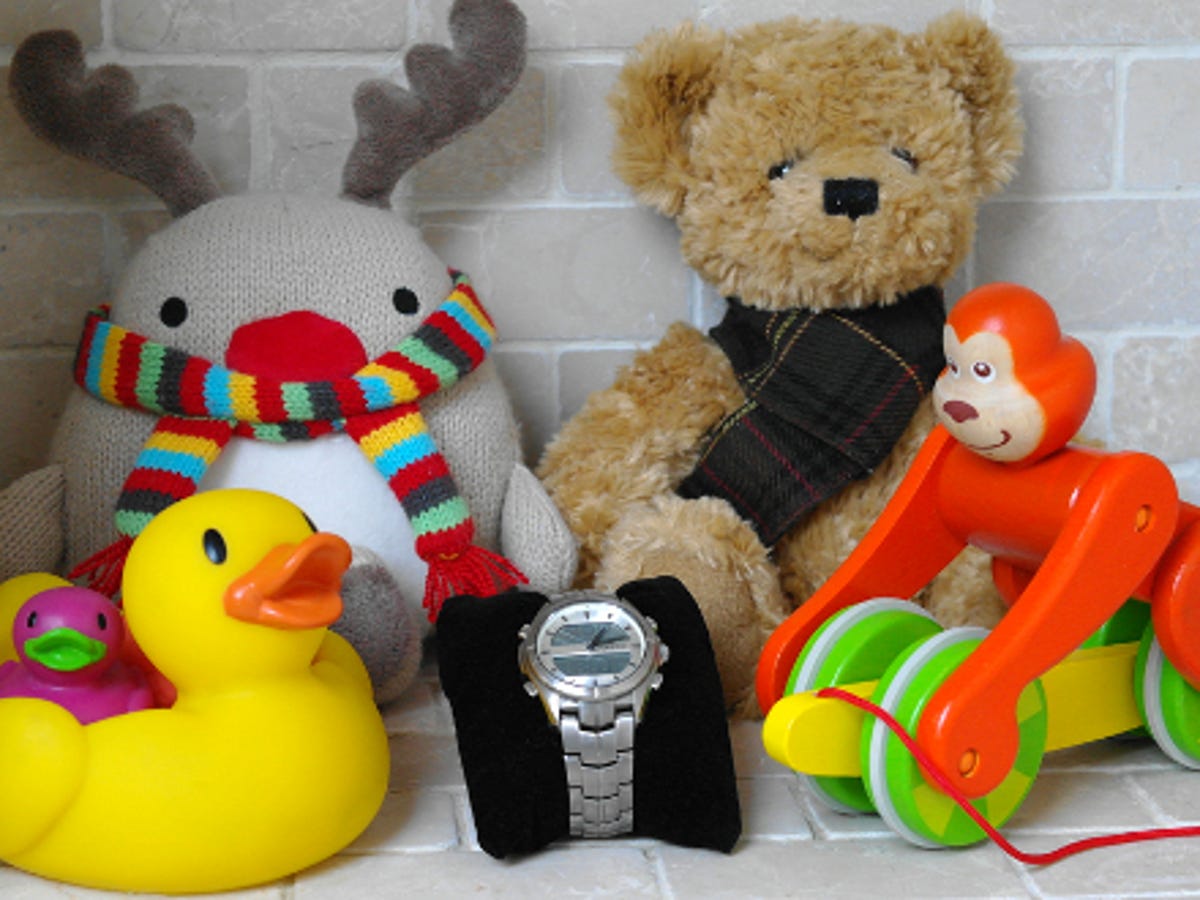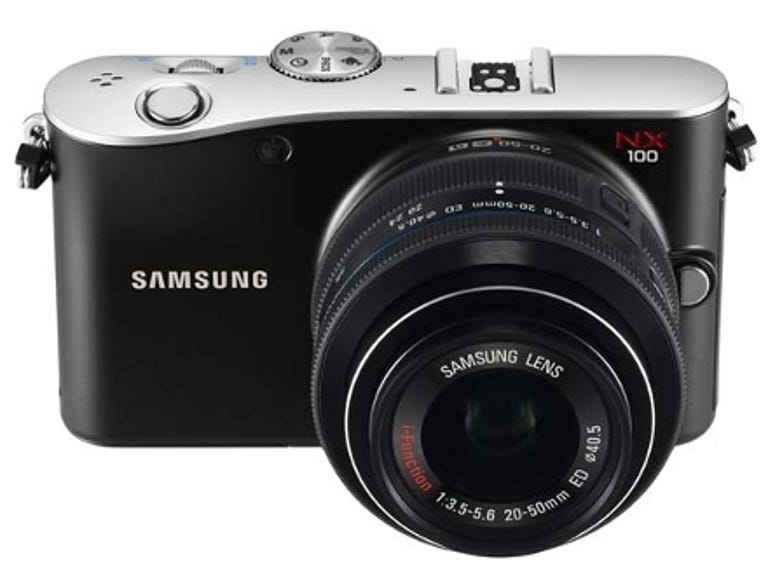 Why You Can Trust CNET
Why You Can Trust CNET Samsung NX100 review: Samsung NX100
The Samsung NX100 offers the straightforward operation of a compact camera while adding a larger, dSLR-size sensor, and the ability to swap lenses. The end result is largely a success.
Samsung's pitch for the 14.6-megapixel NX100 is that it brings professional results to those with beginner-level skills. It's the manufacturer's second compact camera with interchangeable lenses, the first being the NX10, released at the start of the year.
The Good
The Bad
The Bottom Line
Stiff competition comes in the form of other hybrid cameras, such as the Olympus Pen E-P2 and E-PL1, Panasonic Lumix DMC-GF1 and GF2, and Sony Alpha NEX-3 and NEX-5. Like the NX100, all of those cameras provide the option to swap lenses, while offering a smaller form factor than a digital SLR.
You can expect to pay a reasonable £430 for the NX100, including the compact 20-50mm zoom lens we tested. For about the same price, there's a 20mm pancake-lens kit for those who really value compactness.
Samsung all the way
Samsung proudly states that the technology inside the NX100 is '100 per cent Samsung'. One consequence of this is that the NX100 incorporates a large, APS-C-sized CMOS sensor, as found in dSLRs, which helps to deliver improved image quality. Another consequence is that the NX100 offers a couple of innovations based around the second most important element of the camera: the lens itself.

The retractable 20-50mm zoom lens, which offers an equivalent 30.8-77mm focal range in 35mm film terms, features an 'iFn' button on the side of the lens barrel. Press this and, in conjunction with a rotation of its front ring, the exposure-compensation (+/- 3EV), white balance, shutter-speed, aperture and light-sensitivity settings (up to ISO 6,400) can be adjusted on the fly without otherwise having to take your eye off your subject. The effects of your changes are shown in real-time on the screen.
The camera's built-in i-Scene lens-priority mode also allows it to automatically recognise what type of lens has been attached, and so suggest which kind of scene a particular lens is best suited for. Since the NX100 doesn't feature in-body anti-shake technology, defence against wobbly hands comes via lens-shift image stabilisation only.
The NX100 sports an impressive, 3-inch AMOLED screen that's impressively bright and clear; dynamic range expansion; 14 scene modes; raw and JPEG capture to an SD or SDHC card (up to 32GB); and 720p video capture at 30 frames per second. Samsung's colour-temperature-adjusting 'photo style selector' function, as included on its smaller-sensor compact-camera range, is also included.
What's missing?
What's been left out of the NX100 is just as important as what's been put in. There's no separate viewfinder included as part of the kit, although an electronic viewfinder is available as an extra for about £130. Also, frustratingly, while there's no built-in flash, there is a vacant hotshoe for attaching a flashgun.
Less of a deal-breaker is the fact that, unlike on the Panasonic GF-series or Olympus E-PL1 cameras, the NX100 lacks a dedicated video-record button. The video mode is instead selected via a reassuringly chunky top-mounted mode dial, which has a ridged edge to give you a firmer grip. Also on the mode dial are Samsung's standard scene- and subject-recognising 'smart auto' mode, and the creative quartet of program, shutter-priority, aperture-priority and manual shooting modes, along with a scene-mode option.
Try and grip the camera and you'll notice that there isn't really a handgrip to speak of. To cut down on the overall bulk, Samsung has instead provided a subtle bulge towards the upper edge of the face plate with an indentation for your thumb at the back. While it doesn't feel like you're going to drop the camera, its smooth surface is a tad slippery. We gripped the NX100 with both hands to get the steadiest shots, with our left hand encircling the zoom barrel as one would grip a dSLR.
Portability is another concern. Though narrower than a dSLR, the NX100 is still too large for the average jacket pocket.
The NX100 offers large and obvious controls on its top plate. The back plate features a smattering of dedicated function buttons that are a cross between those found on an entry-level dSLR and a snapshot compact, so most people should find handling the camera to be an intuitive experience.
That said, we took issue with the fact that the four-way control pad on the rear is actually more of a scroll wheel. Like the iFn ring, it's very sensitive, which means that it's easy to skip past the settings you actually want.
Sharp as a tack
The image quality delivered by the 20-50mm lens and APS-C-sized sensor is actually pretty good, although we think it falls short of that of an actual dSLR with a full-sized lens. A smaller form factor is bound to lead to some compromises, and picture quality is among them.
Nevertheless, the NX100 delivers consistent sharpness and avoids the pitfall of focus falling off toward the edges of frame when shooting at the maximum wide-angle setting. We were also impressed by the colours that the camera delivers. They really pop out at you.
We did notice occasional lens flare when shooting in bright winter conditions, and occasional purple fringing between areas of high contrast, but these are bugbears of the majority of digital cameras. On the whole, we were pleased with the NX100's results.
Verdict
Viewed in isolation, the Samsung NX100 isn't bad at all. But you also have to compare it to its rivals, and Samsung's 'NX' system doesn't yet feel as fully realised as the hybrid systems from competing brands, which have had the advantage of up to a year's head start. Also, while the basic NX100 set-up may be reasonably priced, add on a flash and an EVF and it suddenly isn't so much cheaper than many of its rivals. Given the choice, we'd still rather use an Olympus Pen or Panasonic GF-series camera because of their slightly better build quality.
Edited by Charles Kloet
